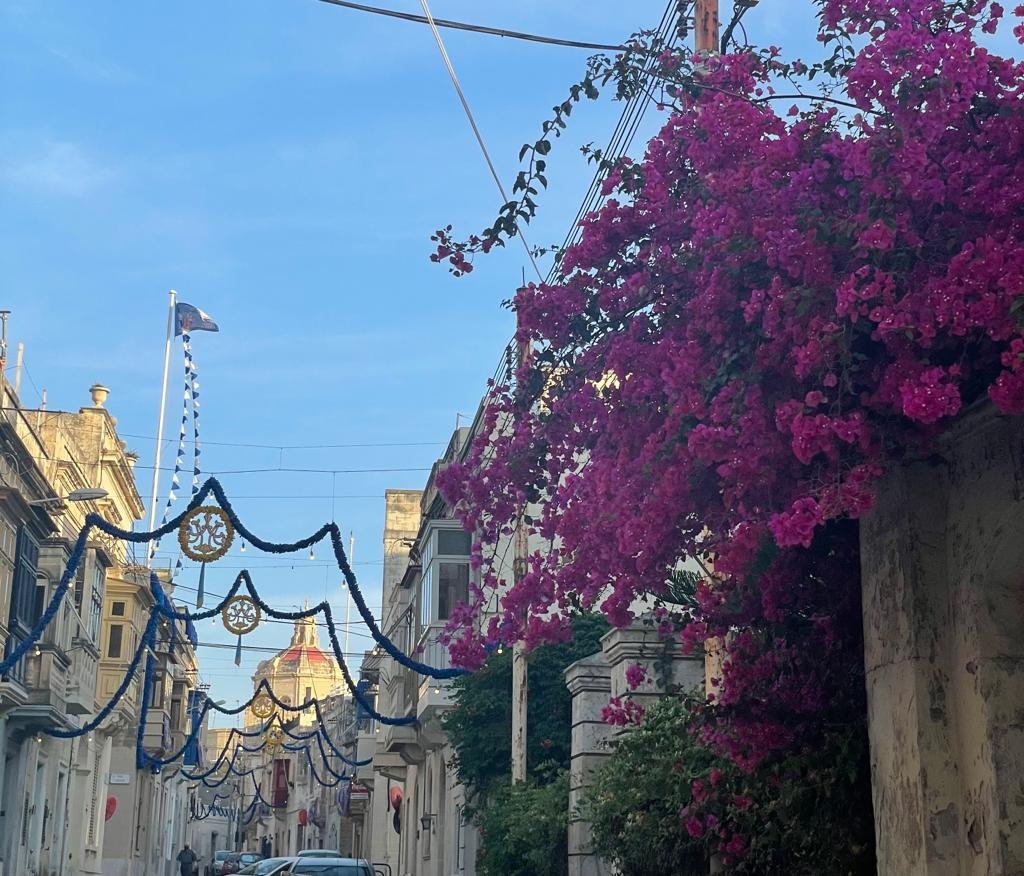A Home in Tarxien - Chapter 1
This is the second part in a mini series that will chronicle the restoration of a 500 year old house in Tarxien. Read the first part here. For more updates, follow our dedicated account @ahomeintarxien.
“The house in Zejtun was just sold.”
“Oh.” Eyes downcast, lips twitching.
“Well, if a block of apartments is truly planned for next door, then maybe that’s a good thing.”
“True.” We both knew that was probably the reason why such a large plot with a gorgeous garden was so reasonably priced.
The sun bore down on us in the way only an August sun, in Malta, while standing on a gravel paved road at noon could. Mercilessly. We stood around for a while as we bid goodbye to the estate agent who told us to think it over well. We had just been at a viewing in Siggiewi, a second one, of a converted house of character. All three of us had emerged from the narrow alley where the house was, just metres from the stone statue of St Nicholas in the piazza. The estate agent, with whom we had a good relationship (we had bought our apartment from him as well) had just told Carl about Zejtun while I had lingered a little further ahead.
I wasn’t keen on the house in Siggiewi, confirmed by this second visit to which I had only agreed because Carl really wanted a second look. Top on my list of “No”s, was the budget. And this was the funny part because, for some reason, I had planted a pricein my mind, which would have been agreeable. Stretching it, but agreeable. But when Carl and I were discussing the merits of the house – lovely courtyard with a little orange tree, I could already see people holding wine glasses as twilight crept over and the lights went on, and the tree was illuminated, light bouncing off the French windows bordering that courtyard, the lovely kitchen that led to a decent garden out back with the looming parish church as perfect backdrop, and the beautiful wrought iron staircase, don’t get me started on the staircase – he said the only downfall was the price the owner was asking for.
“Well, true we’d be stretching it a bit but it’s not that bad for the size.” And when he looked at me quizzically and said I must be joking, I knew something was off. And then he told me the asking price and my jaw literally fell. All rosy pictures of laughter floating from the courtyard and me having my coffee to the sound of the bells of St Nicholas evaporated quite comically into thin air.
“Then why are we even discussing this? It’s definitely out of the question.”
“Maybe.” That maybe was why we were now standing in the little sliver of shade, in the piazza of Siggiewi, on a sluggish August afternoon. Carl agreed – the asking price was too high for something we’d still need to invest good money in to get it to the standards we both wanted. I was happy at this (the man saw sense!) but, with the news of Zejtun that the estate agent had brought along with him, we were back to square one.
I’m not sure what made us start looking into houses of character that Summer of 2018. Knowing us, we had probably just seen something we liked online and said, why not go see it? We always knew the apartment would be a temporary base until we bought something bigger, and now seemed a good a time as any to start viewing. We had narrowed down our search for houses of character without even discussing it much. None of us needed convincing – we loved the warm atmosphere of old houses, the way they seemed to embrace you the moment you stepped through. We were here before you, they seem to say¸ and we’ll be here long after you’re gone. And there's a sense of security in that, a permeance. It’s like living in a story book, in which you get to write a chapter.
When Tarxien came along (you can read how that happened in the previous post), I was a bit stunned. I had never imagined I'd be lucky enough to find something there. I grew up in Tarxien, a small unassuming town in the central south area, locked in by towns that spilled out from it over the centuries. The megalithic temples and the feast of the Annunciation are probably the two things that put it on the map for foreigners and locals alike. There’s nothing spectacular about it, no fancy, wide tree-lined avenues, sprawling piazzas, or sparkling coast. No great architect, renowned writer, archeologist, activist or artist was born here (as my mother from Zebbug likes to tease, listing down the Dun Karm Psailas and Antonio Sciortinos and Dun Mikiel Xerris that Zebbug produced on her fingers). There isn’t even a decent cafeteria that’s not the kazin or the Pretoria bar where men hang around with their little finches in a cage. But I have a certain fondness for it, in the way you can only have for something you know and that’s dear to you.
Tarxien doesn’t dazzle or overwhelm. It whispers and if you’re not paying attention, you could just as easily drive or walk past without even seeing it. But it's there, pockets of stubborn refusal to change too much from how it has always been.
The rows of coloured balconies, the palazzos all lined up next to each other on the same road, how the street narrows just in front of the parish church so that you’re forced to focus on that one imposing structure as you make your way towards it. The big, old trees as you drive past the War Memorial, before you reach the oldest part of town. The elegant houses and villas ‘wara il-bjut’, the carefully restored facades of Triq Paola, and the dilapidated ones in many an alley and forgotten waysides. Individual snapshots of a town that has not lost its character. Not yet, at least.
Sure, that big, ugly 11-storey monster they built at the very edge, bordering with Tal-Barrani marred the quaint view of the small step-like houses leading up to the church, like it was a crown on a terracotta pillow. The residents fought against it tooth and nail, and only managed to shave off a few floors that would have seen the structure literally drown everything around it more than it already is, but that’s a tragedy we have to live with everywhere else too. No, I like Tarxien, its familiar ways and people (who seem to gravitate around the area even when they move out, and not wander too far off), the festa, the Good Friday plays, the bells, my running trail, the fact that I can walk to the Three Cities, one of my favourite spots on the island.
So when I went to see the house, a house which I was soon to discover is a two minute walk from my parents’, and despite my initial reservations, I think I was already a bit biased.
I had come back home.

